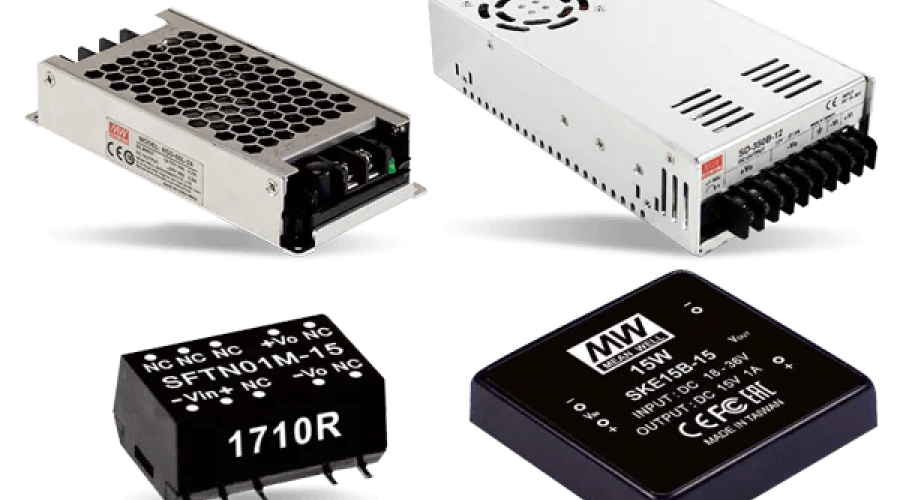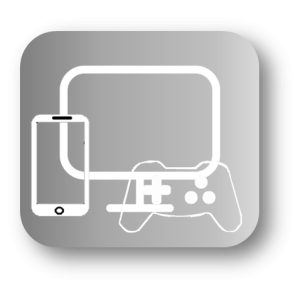
Introduction
In the realm of modern electronics, DC/DC converters are indispensable. These power conversion circuits, also known as DC voltage converters or DC power converters, play a crucial role in converting one DC voltage level to another. They are at the heart of many devices, from the smartphones we use daily to the industrial equipment that powers our industries, ensuring efficient and effective operation[1].
Whether it's stepping down the voltage from a lithium-ion battery to power the integrated circuits in a smartphone or stepping up the voltage for functions like contactless payment, DC/DC converters are the unsung heroes that make these operations possible. They are also integral in automotive applications, where they convert the battery's voltage to the different voltage levels required by various components of the vehicle.
In this comprehensive guide, we delve into the world of DC/DC converters, exploring their history, uses, and the different types available. We also look at how they work, their advantages, and where they are needed. Whether you're an electronics engineer, a hobbyist, or someone interested in learning about the technology that powers our world, this article will provide valuable insights into the fascinating world of DC/DC converters.
History of DC-to-DC Converters
The history of DC-to-DC converters, also known as DC voltage converters or DC power converters, dates back to the early 20th century. These power conversion circuits were initially developed to cater to the needs of telecommunication systems. For instance, in the early days of telephony, DC-to-DC converters were used to convert the high voltage from power lines to lower voltage levels suitable for operating telephone exchanges and switchboards.
As technology advanced, so did the complexity and capabilities of DC-to-DC converters. The advent of solid-state electronics in the mid-20th century marked a significant milestone in the evolution of these converters. During this period, the development of semiconductor diodes and transistors revolutionized the design of DC-to-DC converters. These new components allowed for the creation of converters that could efficiently handle higher power levels, paving the way for their use in a wider range of applications, from powering the burgeoning field of personal computers to the control systems of industrial machinery.
In the late 20th and early 21st centuries, the demand for portable electronic devices like smartphones and laptops led to a surge in the need for compact, efficient, and high-performance DC-to-DC converters. These converters had to be small enough to fit into increasingly slim device designs yet powerful and efficient enough to maximize battery life. This era saw the development of advanced converter designs, such as synchronous converters, which use high-speed switching elements to achieve excellent efficiency and performance.
Today, DC-to-DC converters are integral components in a vast array of electronic devices, from mobile gadgets to industrial machinery, playing a crucial role in our technologically driven world. They have evolved from simple voltage conversion circuits to sophisticated power management systems capable of optimizing energy use, improving efficiency, and extending battery life.
Looking ahead, the demand for more efficient and compact DC-to-DC converters is set to skyrocket. Innovations in semiconductor technology and materials science are paving the way for converters that can handle higher power levels, operate at higher frequencies, and fit into smaller form factors. The future of DC-to-DC converters is as exciting as it is essential.

MEAN WELL DC-DC Converters, offering module, onboard, PCB, DIN rail, SMD, and enclosed types
Types of DC/DC Converters
In the field of electronics, there are several types of DC/DC converters, each with unique characteristics and functions. Understanding these types can help you better comprehend the operation of DC/DC converters and their role in various applications.
- DC/DC Converter: This is the general term for an electronic circuit that converts a source of direct current (DC) from one voltage level to another. It is a type of electric power converter.
- Buck Converter: Also known as a step-down converter, a Buck Converter reduces voltage (while increasing current) from its input (supply) to its output (load).
- Boost Converter: A Boost Converter is a type of DC-to-DC power converter that increases voltage (while decreasing current) from its input (supply) to its output (load).
- Buck-Boost Converter: A Buck-Boost Converter can either increase or decrease the output voltage magnitude relative to the input voltage magnitude. It is equivalent to a flyback converter using a single inductor instead of a transformer.
These converters often incorporate various components to carry out their functions:
- Switching Element: Typically, a transistor, the Switching Element, is used to switch current flow on and off in the converter circuit.
- Inductor: An Inductor is a passive electronic component that stores energy in a magnetic field when electric current flows through it. It is often used in DC/DC converters to store energy for later use.
- Capacitor: A Capacitor is a passive electronic component that stores energy in an electric field. In DC/DC converters, capacitors are used to smooth the output voltage and filter out any AC components.
Understanding these types of DC/DC converters is crucial for anyone working with or studying power electronics, as they form the basis of how these converters operate and function.
Uses of DC/DC Converter
DC/DC converters are integral components in a wide range of applications, spanning various fields such as consumer electronics, industrial machinery, automotive systems, and renewable energy technologies. Their primary function is to transform a source of direct current (DC) from one voltage level to another, a crucial role in scenarios where the input DC voltage is not suitable for the device or component that needs to be powered.
In the realm of renewable energy systems, such as solar photovoltaic systems and wind turbines, DC/DC converters are the unsung heroes. They maximize the energy harvest from these systems, converting the variable voltage output from renewable energy sources to a stable voltage suitable for either direct use or storage.
What is a DC-to-DC converter used for?
A DC/DC converter is used to adapt the input voltage from a power source to the voltage level required by a device or component. For instance, in a smartphone, a DC/DC converter is used to adapt the voltage from the lithium-ion battery to the different voltage levels required by the various components inside the phone. The processor may require a voltage of 1.8 volts, while the screen backlight may require 3.3 volts, and the contactless payment system may require 5.0 volts. The DC/DC converter ensures that each component receives the correct voltage level for its operation.
DC/DC converters are also used in electric vehicles, where they convert the high voltage from the car's battery down to the lower voltage levels required by the vehicle's electronic systems. In renewable energy systems, such as solar power systems, DC/DC converters are used to maximise the power extraction from the solar panels and convert it to a voltage level suitable for the connected battery or grid.
In industrial applications, DC/DC converters are used in power supplies for various types of machinery and equipment. They ensure that each piece of equipment receives the correct voltage level for its operation, regardless of the voltage level supplied by the power source.
-
DC/DC Converters in Power Supplies for Personal Computers and Office Equipment
DC/DC converters are employed in a variety of applications, including power supplies for personal computers, office equipment, spacecraft power systems, laptop computers, and telecommunications equipment, as well as DC motor drives. The input to a DC/DC converter is an unregulated DC voltage Vg. The converter produces a regulated output voltage V, having a magnitude (and possibly polarity) that differs from Vg. For example, in a computer off-line power supply, the 120 V or 240 V AC utility voltage is rectified, producing a DC voltage of approximately 170 V or 340 V, respectively. A DC/DC converter then reduces the voltage to the regulated 5 V or 3.3 V required by the processor ICs.
-
High Efficiency and Switched-Mode Circuits
High efficiency is invariably required since cooling of inefficient power converters is difficult and expensive. The ideal DC/DC converter exhibits 100% efficiency; in practice, efficiencies of 70% to 95% are typically obtained. This is achieved using switched-mode, or chopper, circuits whose elements dissipate negligible power. Pulse-width modulation (PWM) allows control and regulation of the total output voltage.
-
DC/DC Converter Circuit: The Buck Converter
A basic DC/DC converter circuit known as the buck converter is commonly used. A single-pole double-throw (SPDT) switch is connected to the DC input voltage Vg. The switch network changes the DC component of the voltage. By Fourier analysis, the DC component of a waveform is given by its average value. The average value of Vs(t) is given by Vs=1/Ts*vs(t)dt from 0 to Ts=DVg. The switch network reduces the DC component of the voltage by a factor equal to the duty cycle D. Since 0 ≤ D ≤ 1, the DC component of Vs is less than or equal to Vg.
-
DC/DC Converter Applications
DC/DC converters are used in a wide range of applications. They are essential in power supplies for personal computers, office equipment, spacecraft power systems, and telecommunications equipment. They are also used in DC motor drives and other applications where a regulated output voltage is required from an unregulated input voltage.
Electronic Conversion
Electronic conversion is at the core of DC/DC converter operation. It involves the transformation of one DC voltage level to another, which is achieved through different types of DC/DC converters. These include magnetic, bidirectional, and capacitive converters, each with unique characteristics and applications.
Choosing the right type of DC-to-DC converter for a specific application is a bit like choosing the right tool for a job. Factors such as the input and output voltage levels, power requirements, efficiency, cost, and size all need to be considered. It's a delicate balancing act, but when done right, the results speak for themselves.
In the world of battery management systems, DC-to-DC converters are the gatekeepers. They balance the charge across multiple battery cells, ensuring that each cell is charged and discharged evenly. This helps to maximize the lifespan and performance of the battery, much like a well-conducted orchestra.
-
Magnetic
Magnetic DC/DC converters, also known as inductor-based converters, use magnetic fields to convert voltage levels. They store energy in a magnetic field during the "on" phase and release it during the "off" phase. This type of converter includes Buck, Boost, and Buck-Boost converters, which step down, step up, or both step-down and step up the input voltage, respectively.
-
Bidirectional DC-to-DC Converters
Bidirectional DC-to-DC converters, as the name suggests, can convert voltage in both directions, from high to low and from low to high. They are particularly useful in applications that require energy to be transferred back and forth between two DC sources, such as battery charging and discharging systems.
-
Capacitive
Capacitive DC/DC converters, also known as switched-capacitor converters, use capacitors to store and transfer energy. They are often used in applications that require small size and low cost, such as integrated circuits and portable devices. Capacitive converters can also provide high efficiency and good power density, making them a popular choice for many electronic devices.
Electromechanical and Electrochemical Conversion
DC/DC converters play a crucial role in both electromechanical and electrochemical conversions, integral to many applications, including electric vehicles, industrial machinery, and energy storage systems.
Electromechanical Conversion
Electromechanical conversion refers to the process of converting electrical energy into mechanical energy, and vice versa, using electromechanical devices such as motors and generators. In an electric vehicle, for instance, the battery supplies DC power, which is converted into AC power by an inverter. This AC power is then used to drive the electric motor, which converts the electrical energy into mechanical energy to move the vehicle. Conversely, during regenerative braking, the motor acts as a generator to convert the mechanical energy back into electrical energy, which is stored in the battery.
DC/DC converters play a crucial role in this process. In the case of the electric vehicle, a DC/DC converter is used to step down the high voltage from the battery to a lower voltage suitable for the vehicle's auxiliary systems, such as the lighting and infotainment system. This ensures that these systems can operate safely and efficiently, regardless of the battery's voltage level.
Electrochemical Conversion
A DC-to-DC converter is an electronic circuit or electromechanical device that converts a source of direct current (DC) from one voltage level to another. It is a type of electric power converter. Power levels range from very low (small batteries) to very high (high-voltage power transmission).
DC-to-DC converters are used in portable electronic devices such as cellular phones and laptop computers, which are supplied with power from batteries primarily. Such electronic devices often contain several sub-circuits, each with its own voltage level requirement different from that supplied by the battery or an external supply (sometimes higher or lower than the supply voltage).
Most DC-to-DC converter circuits also regulate the output voltage. Some exceptions include high-efficiency LED power sources, which are a kind of DC-to-DC converter that regulates the current through the LEDs, and simple charge pumps, which double or triple the output voltage.
DC-to-DC techniques that use transformers or inductors work at much higher frequencies, requiring only much smaller, lighter, and cheaper wound components. Consequently, these techniques are used even where a mains transformer could be used; for example, for domestic electronic appliances, it is preferable to rectify mains voltage to DC, use switch-mode techniques to convert it to high-frequency AC at the desired voltage, and then, usually, rectify to DC.
Practical electronic converters use switching techniques. Switched-mode DC-to-DC converters convert one DC voltage level to another, which may be higher or lower, by storing the input energy temporarily and then releasing that energy to the output at a different voltage.
Most DC-to-DC converters are designed to move power in only one direction, from dedicated input to output. However, all switching regulator topologies can be made bidirectional and able to move power in either direction by replacing all diodes with independently controlled active rectification.
A further means of DC to DC conversion in the kilowatts to megawatts range is presented by using redox flow batteries such as the vanadium redox battery.
By understanding the role of both electromechanical and electrochemical conversions in DC/DC converters, engineers and hobbyists can better design and optimise their electronic systems for maximum efficiency and performance.
Chaotic Behaviour of DC-to-DC Converters
In the world of electronics, the term 'chaotic behaviour' refers to the unpredictable and complex patterns that can emerge in certain systems under specific conditions. DC-to-DC converters, despite their seemingly straightforward operation, are not immune to this phenomenon.
Under certain operating conditions, DC-to-DC converters can exhibit chaotic behaviour, where the output voltage fluctuates unpredictably. This is often due to non-linear dynamics in the converter's operation, such as rapid switching between different modes of operation. The chaotic behaviour can be influenced by various factors, including the input voltage, load conditions, and the specific design of the converter [2].
While chaotic behaviour in DC-to-DC converters can pose challenges in terms of stability and reliability, it also opens up opportunities for exploration and innovation. Understanding and controlling this chaotic behaviour can lead to the development of more efficient and robust converters, pushing the boundaries of what's possible in power conversion technology.
Research into the chaotic behaviour of DC-to-DC converters is an active field, with scientists and engineers continually seeking to understand and harness this phenomenon for the advancement of electronics technology.
Current research is like a treasure hunt, with scientists and engineers seeking to develop control strategies and design techniques to mitigate the chaotic behaviour of DC-to-DC converters. These strategies aim to improve the stability and reliability of these converters, making them more suitable for critical applications. It's a fascinating field, full of challenges and opportunities.
Conclusion
In conclusion, DC/DC converters, also known as DC voltage converters or DC power converters, are integral components in the world of electronics. They facilitate the seamless adaptation of voltage levels for various devices and systems. Whether stepping down or stepping up the voltage, these converters ensure the efficient and effective operation of our devices.
Understanding the different types of DC/DC converters, including Buck, Boost, and Buck-Boost converters, empowers electronic engineers and enthusiasts to choose the most suitable solution for their specific needs. Furthermore, knowing where and when to use a DC/DC converter can significantly enhance the performance and lifespan of electronic devices.
As technology continues to evolve, the role of DC/DC converters is set to become even more critical. Therefore, staying informed about the latest developments in DC/DC converter technology is essential for anyone involved in electronics design or manufacturing.
This article has provided a comprehensive guide to DC/DC converters, exploring their history, uses, and the different types available. We hope that it has been informative and educational, providing valuable insights into the fascinating world of DC/DC converters.
With continued research and development, the future of DC-to-DC converters looks bright. We can expect to see even more efficient and compact converters in the coming years, further enhancing the performance of our electronic devices and systems. It's an exciting time to be involved in the world of electronics!
Summary
- DC/DC converters are integral components in modern electronics, converting one DC voltage level to another.
- There are various types of DC/DC converters, including Buck, Boost, and Buck-Boost converters.
- DC/DC converters can exhibit chaotic behaviour under certain conditions due to non-linear dynamics in their operation.
- Continued research and development in DC/DC converter technology is expected to lead to more efficient and compact converters in the future.



Leave a comment